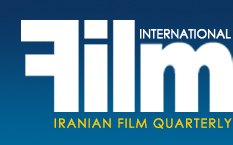|
Interview with Seyed Mohammad Beheshti on past and present films for children and adolescents:
Our Cultural Front Has Been Conquered by Others
by Ehsan Houshiagar
|
Seyed Mohammad Beheshti, who has served as managing director of Farabi Cinema Foundation, was among Iranian cinema officials of 1980s the impact of whose policies and ideas linger up to the present time. Some fans call him an efficient manager and architect of the Iranian cinema while others blame him and his colleagues for reducing the Iranian cinema to state recipes. Beheshti, however, was one of the most efficient cinema officials of Iran whose knowledge of the world cinema and strategic policies which aimed to take the Iranian cinema to its deserved status in the world after many years in which the Iranian cinema was in limbo, have made him an expert whose words show that he is still following up cinema affairs. The following interview was carried out on the sidelines of the Festival of Films for Children and Young Adults in Hamedan (October 2010) about the situation of children’s cinema in Iran. He was one of those who helped the Iranian cinema flourish in the second half of 1980s. Here, he talks about then and the current situation of films made for children and adolescents.
Film International: How come that you founded children’s cinema and was that plan based on a comprehensive cultural engineering?
Mohammad Beheshti: I do not agree with “cultural engineering” and prefer “cultural management.” In cultural management we try to fertilize culture and arts. Since our population was very young at that time and we had a pre-revolution background of film production for children and young adults, we were capable enough to focus on this genre. However, our professional cinema did not believe in this. Due to pre-revolution conditions of the professional cinema, they could not believe that this cinema may be able to focus on films for children and adolescents. Therefore, we decided to do something about it. Private producers, naturally, did not believe in this because they did not think that children’s cinema could be profitable and were wary about investing in it. Therefore, Farabi Cinema Foundation started by making The City of Mice (1985). Since Mice School had been already aired on the state TV as a series, the characters were familiar to their young audience. When we decided to make The City of Mice, we invited production crew of the TV series. Even then, the mainstream cinema was still unbelieving until the film was made and became a hit both in terms of audience and economic return. We began a new group in Farabi Cinema Foundation known as children group to work on various scenarios, introduced an independent section for children in Fajr International Film Festival and invited foreign and domestic films to that section. Therefore, children’s cinema gradually matured in its new identity and the private sector became active in that sphere.
FI: So, it was after filmmakers took children’s cinema seriously that you launched a festival of children’s films in Isfahan?
MB: Yes. We branched off the Fajr Festival in 1989 and it was launched as an independent festival for children and adolescents in Isfahan. After years of studying various children’s festivals and film markets, we realized that children's cinema was quite developed in the world and Iran could have a children’s cinema of its own. Therefore, the festival rapidly turned into an important international event for children’s films and many directors and countries were willing to send their films there because wining its prizes was important to them. The project was started with suspicion, but took off rapidly and was even appraised at an international level, both in terms of films made here, and with respect to its structure.
FI: Looking back at that time, we would see that cultural managers created a new current by launching the children’s cinema and The City of Mice was quite preplanned. Please explain more about this.
MB: what we did in cultural management was not to create something from scratch. There were fertile grounds for it. In fact, given pre-revolution background of children’s films, we had enough capacities in the country to restart that genre. It was, however, important to turn those capacities into an industry and an economic current in the Iranian cinema. This issue had been ignored before and we tried to bank on the capacities provided by Farabi Cinema Foundation and recreate a cinema for children caring for both production and economic turnover of such films. In other words, we already had a sapling planted and we tried to turn it into a robust tree. Therefore, the children’s cinema was not created from nothing. We just tried to make the most of the existing capacities. Naturally, when you give identity to children’s cinema, necessary forces are trained in the meantime; we did not organize special classes and courses to train them...
[Page: 84]
|
|
|
|
|
President & Publisher
Massoud Mehrabi
Editors:
Sohrab Soori
Translators:
Sohrab Soori
Behrouz Tourani
Zohreh Khatibi
Contributors
Saeed Ghotbizadeh
Mehrzad Danesh
Advertisements
Mohammad Mohammadian
Art Director
Babak Kassiri
Ad Designers
Amir Kheirandish
Hossein Kheirandish
Cover Design
Alireza Amakchi
Correspondents
E.Emrani & M. Behraznia (Germany)
Mohammad Haghighat (France)
A. Movahed & M. Amini (Italy)
Robert Richter (Switzerland)
F. Shafaghi (Canada)
B. Pakzad (UAE)
H. Rasti (Japan)
Print Supervisors
Shad-Rang
Noghreh-Abi
Gol-Naghsh
Subscription & Advertising Sales
Address: 10, Sam St., Hafez Ave., TEHRAN, IRAN
Phone: +98 21 66722444
Fax: +98 21 66718871
info@film-magazine.com
Copyright: Film International
© All rights reserved,
2023, Film International
Quarterly Magazine (ISSN 1021-6510)
Editorial Office: 5th Floor, No. 10
Sam St., Hafez Ave., Tehran 11389, Iran
Printed in Tehran
Publishing Date Winter 2011
*
All articles represent views of their
authors and not necessarily
those of the editors
|
|
|

